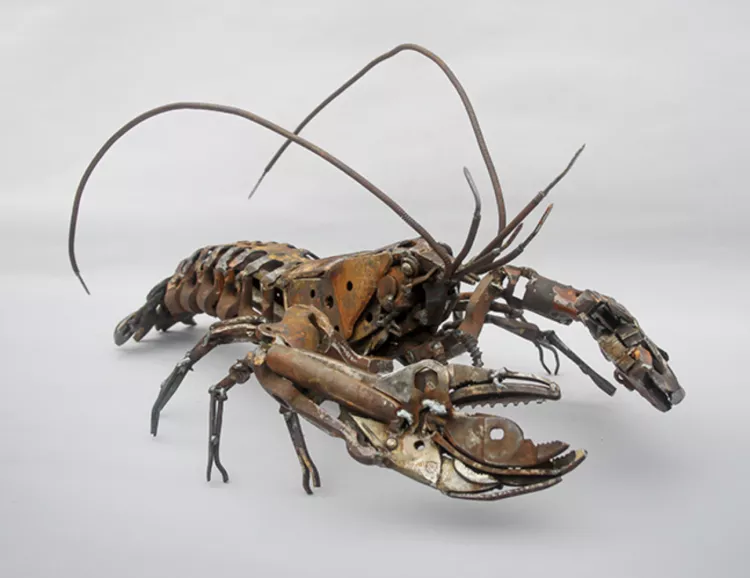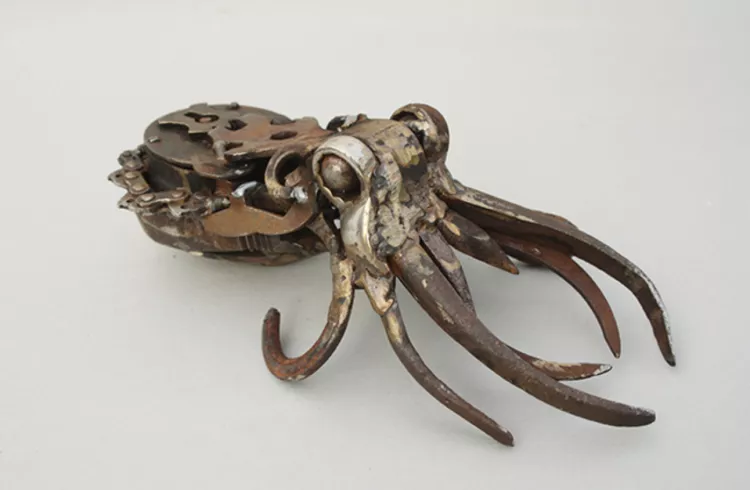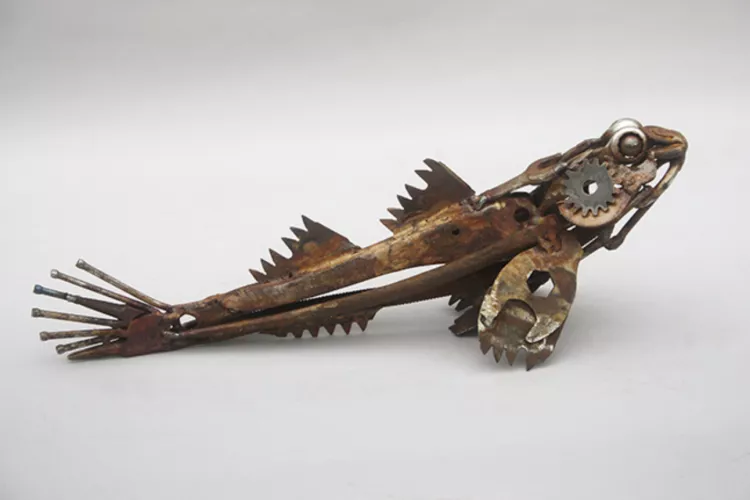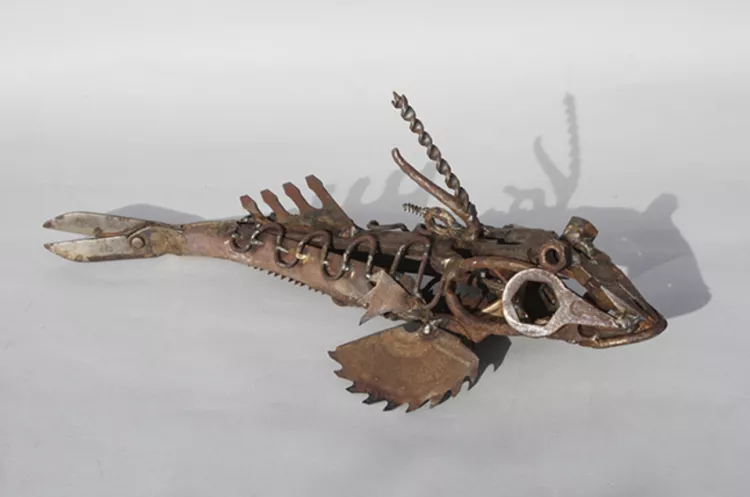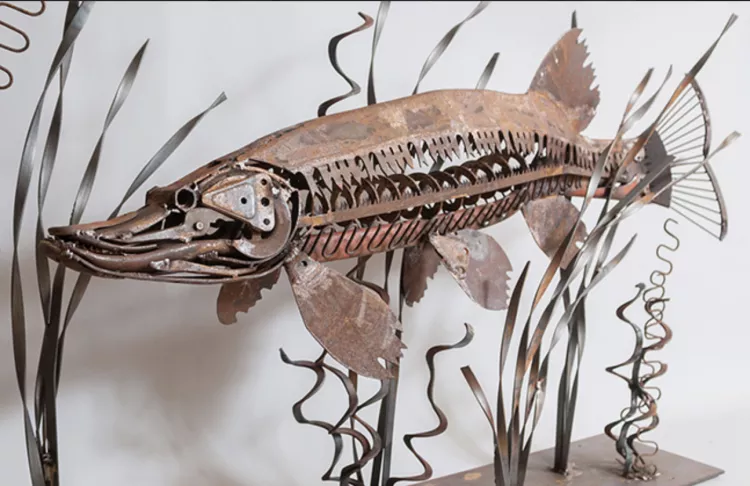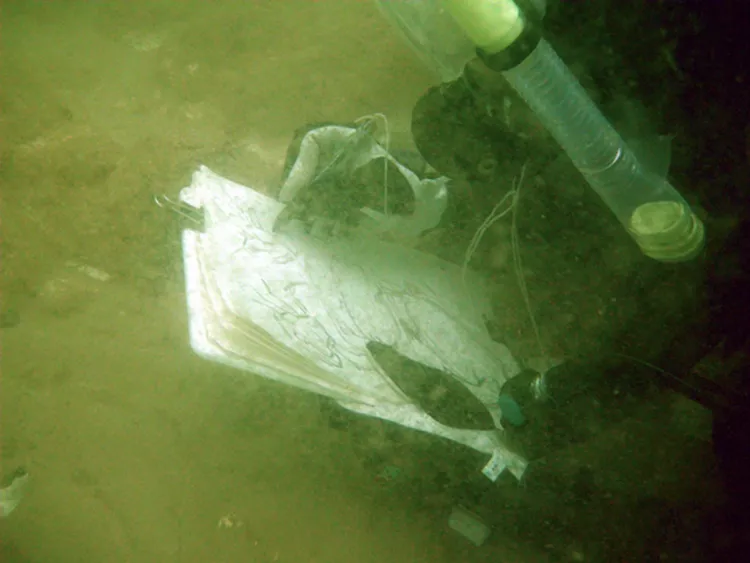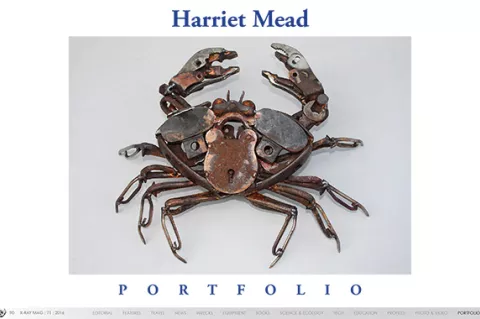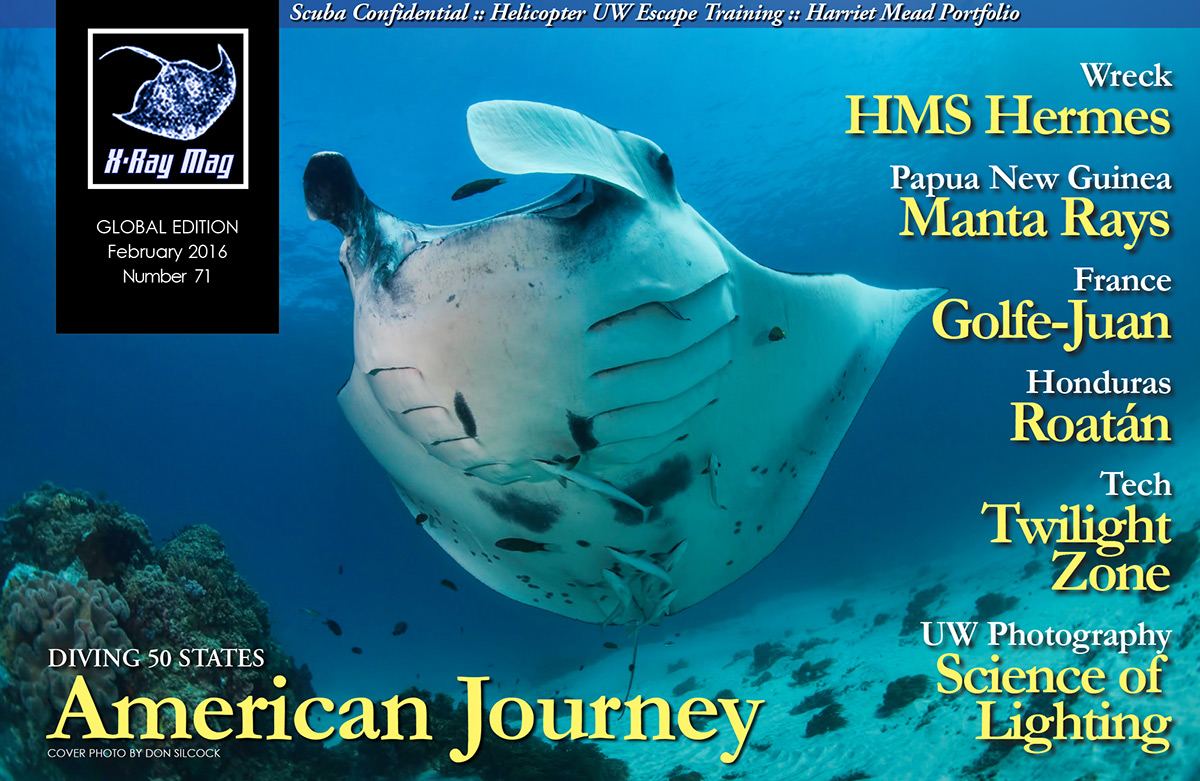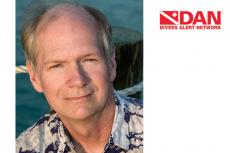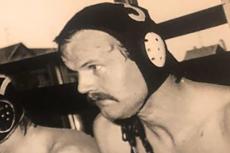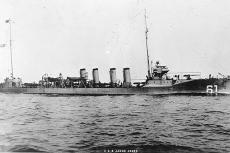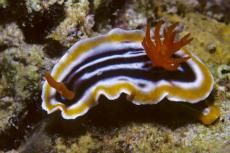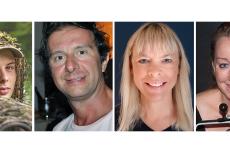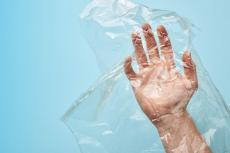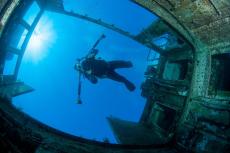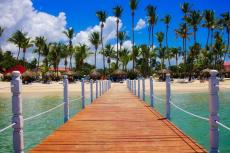
Harriet Mead Portfolio
British artist Harriet Mead sculpts marine life out of found objects, capturing not only their curious forms but also a nearly lifelike vitality pulled out of recycled metal parts we might recognize as common household objects we use in daily life or find in the tool shed out in the backyard. <i>X-RAY MAG</i> interviewed the artist to learn more about her work, insightful perspectives and creative process.
Contributed by
X-RAY MAG: Tell us about yourself, your background and how you became an artist.
HM: Since I was a child, I’ve always known I was going to be an artist—it’s amazing that the naive child turned out to be right! My father was an ornithologist and my mother is artistic but also very interested in the natural world, so it was inevitable that I would be inspired by wildlife. I studied sculpture at an art college and have been making sculptures ever since.
X-RAY MAG: How did you develop your style of sculpture, working with found objects? How did you come to the theme of marine life in your work?
HM: I tried various techniques at art college and really enjoyed the freedom of expression that welding allowed. I could make very strong structures very quickly using steel. When I left college, I saved to buy a MIG welder and then started using scrap, as it was easy to get hold of. It was a natural progression to use more and more found objects in my work until they became the only source.
I love using steel, as it allows me to use the strength of welding to express a lightness in the sculpture. For example, I can make a running hare that has only one point of contact (a front leg, for example) which would be impossible in stone or wood.
X-RAY MAG: What is your artistic method or creative process?
HM: I just weld things together! In many ways, it’s just a 3D collage, and I am using the individual items purely for their shape. I am very careful to use items to express the form and structure of the subject so that there are no parts that look out of place. I want the eye to flow around the work, not get upset by an incongruous right angle that has no relevance to the muscle or skeleton of the creature.
I don’t draw or plan the work. I just start with the head and go from there, placing different things against one another until they “click” into place. There’s no point in drawing the sculpture beforehand, as the scrap items dictate how the animal will stand or look. I enjoy leaving empty spaces in pieces, as often the negative space is as important as the filled areas.
X-RAY MAG: What is your relationship to the underwater world and coral reefs? Are you a scuba diver or snorkeler and how has this influenced your art? In your relationship with reefs and the sea, where have you had your favorite experiences?
HM: I have always wanted to learn to dive, so the Wildlife Trusts Undersea Art Award was an ideal opportunity. The Wildlife Trusts paid for me to take my PADI course, and then I made three dives off the North Norfolk coast.
I used a heavy grade watercolour paper and a graphite stick to make sketches, but my dive buddy had to help me find the sketchboard that was floating above me and tied to my belt!
It was very cold and difficult to draw with neoprene gloves on, but considering it was my first-ever dive at sea and I was a complete novice, I think I did pretty well. In fact, concentrating on drawing meant that I didn’t worry about the diving.
Sadly, I haven’t had time to go diving again since then, but I have some of the kit and hope to go out again in the future. It was amazing to experience the underwater world, and as I am fascinated by wildlife, it was a privilege to see the creatures in their own space.
I also think that it was a great experience to dive a “dull” area off the North Sea coast. From land, the sea looks featureless, but once I got underwater, I was amazed at the amount of creatures that I saw.
I strongly believe that seeing wildlife shouldn’t be considered as a destination. People visit particular places to see exciting species or visit beautiful reserves or countries, but sometimes you should take time to look at the wildlife on your doorstep. If you look closely, woodlouse is a wonderful thing and is as fascinating in its own way as an elephant!
X-RAY MAG: What are your thoughts on ocean/freshwater conservation and coral reef management and how does your artwork relate to these issues?
HM: I’m no expert, but I think that unfortunately, worldwide, throughout history, our oceans have been treated as a vast dumping ground, whether intentionally or unintentionally. Their very size means that because they are so vast and currents move around from sea to sea, one nation’s pollution becomes a problem that affects far more countries than where it first originated.
As a resource, they are plundered because they seem to be limitless, but actually, it is becoming increasingly obvious that the marine habitat is vulnerable. The responsibility to look after the oceans sits with us all as individuals and as nations.
On land, a drop in numbers of a familiar species seems more obvious, as it is within our own environment, but for the vast majority of us, the underwater world is completely unfamiliar; and as we cannot experience it firsthand, we cannot visualize the changes for ourselves.
We are told of the threats and issues, but as the ocean is not owned by anyone, it is very difficult to set a cohesive conservation plan in place whilst allowing people to make a living from it.
Part of the reason behind the Wildlife Trusts sponsoring artists to learn to dive was that the artists could interpret what they see and bring a different perspective to the habitat in order to engage a new audience and get people excited by what lives beneath the waves. It also links in with our government designating Marine Conservation Zones (MCZ) where areas are protected to allow fish and other marine creatures to have a safe nursery area so that fish stocks can be regenerated.
Sadly, only a small proportion of the proposed MCZs were actually approved but the Wildlife Trusts along with other conservation organizations continue to campaign to have more set up.
X-RAY MAG: What is the message or experience you want viewers of your artwork to have or understand?
HM: To celebrate the natural world in all its forms. Wildlife art is not all about big photo-realistic paintings of tigers; I want to celebrate the small things and make people think about the way that I have made them.
X-RAY MAG: What are the challenges and/or benefits of being an artist in the world today?
HM: One of the big benefits is social media and the Internet. Many, many more people see my work online than I could have ever imagined when I first started. I enjoy getting feedback from people all over the world, as for me, it’s not always about the sales, it’s as much about people enjoying my work and thinking about the creature in a different way.
I do get a bit bemused sometimes when people share my work with other artists, or even just a mate of a welder asking him or her to make one, as if I just throw them together!
I also think that wildlife art does get bogged down with enthusiastic, often amateur artists copying reference photos. I think it’s a great way to hone your technique, but personally, I’d much rather see someone drawing from life and choosing a subject close to home in a local park or their own garden.
A reference photo does not tell you what the back of the animal looks like or how they move. By observing a subject firsthand, I think the resulting work seems much more truthful and alive.
X-RAY MAG: How do people and children respond to your works? What feedback or insights have you gained from the process of showing your work to various audiences?
HM: One of the things that I find the most satisfying is that my work seems to appeal to people from all backgrounds. I have had some brilliant conversations with mechanics and farmers who take delight in working out the components and reminiscing about old machinery. Often, these people would never consider going to an art gallery, as it’s “not their thing”, but when they see my sculptures online or through displays in public places, they really connect with it.
Children of all ages enjoy spotting things in the work, and I have done little workshops in schools where we have just made collages from all sorts of items from the schoolroom by just lying them on the floor. Their imaginations run wild and it’s great fun. It also teaches them that making quick collages, then photographing them, is enough—art doesn’t have to be permanent.
X-RAY MAG: What are your upcoming projects, art courses or events?
HM: I have a full book of commissions. I also have various projects to help run with my voluntary work as president of the Society of Wildlife Artists. This year, we will continue our “Flight Lines” collaboration with the British Trust for Ornithology (BTO).
Over the last couple of years, our artists have been looking at bird migration with four visiting Senegalese in early 2014 to make work in response to the wintering grounds of many of our summer migrant species. Last year, many artists worked on sites in the United Kingdom to document the summer breeding grounds of our familiar birds, such as cuckoos, nightjars and sand martins.
I will be helping the BTO with a landmark book about migration that will bring the art together with the science behind the research into the extraordinary journeys and pressures that migrating birds experience each year. It’s a very exciting project and will culminate in a large exhibition in 2017. (See: http://www.bto.org/news-events/news/2015-02/flightlines)
In addition, we will be working with a conservation organization in Turkey (DKM) looking at a the Turkish sweetgum tree, which is a key species, and the importance of the sweetgum’s habitat for local communities as well as wildlife. The project will work alongside local schools and Turkish artists and will celebrate the area. The project is still in the final stages of being organized but should be very exciting. ■
For more information or to see more of the artist’s work, visit: www.harrietmead.co.uk.
The responsibility to look after the oceans sits with us all as individuals and as nations.
— Harriet Mead
Published in
-
X-Ray Mag #71
- Læs mere om X-Ray Mag #71
- Log ind for at skrive kommentarer
